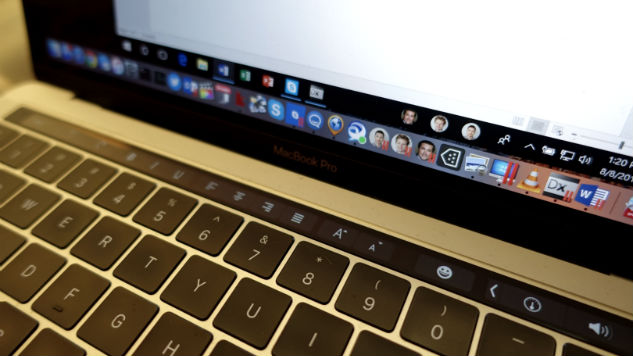Parallels For Mac 10
Parallels Desktop is simply the world’s bestselling, top-rated, and most trusted solution for running Windows applications on your Mac. With Parallels Desktop for Mac, you can seamlessly run both Windows and Mac OS X applications side-by-side without rebooting. Parallels desktop 14 for Mac is the fastest, easiest, and most powerful application for running Windows on Mac-without rebooting. Get up and running in minutes. Easily switch between Mac and Windows applications. Keep the look and feel of Mac OS or use the familiar Windows desktop.
Why Use Parallels Instead of Boot Camp or VirtualBox? RELATED: Sure, you could, but that means restarting your computer every time you need to use Windows. Parallels runs Windows within macOS, using what’s called a Virtual Machine.
This allows you to quickly switch between the Mac and Windows desktops. You can even combine the two desktops, if you want, and run Windows software right on your Mac desktop from your Mac’s dock. Virtual machines are complicated, but Parallels makes it reasonably simple to set one up and use it.
Android sdk manager free download for mac. Android is an open, mobile-phone platform that is currently under development. The Android developers kit will allow you to develop Android applications that. Android SDK for Mac 2018 full offline installer setup for Mac Android SDK for Mac is the official software development package for developers who want to create Android applications that can take full advantage from entire Android hardware and software ecosystem. Android sdk free download - Android SDK Tools, VaxVoIP SIP Android SDK, Android SDK Search, and many more programs. Follow the official Uptodown communities to keep up with all the new Android apps and games.

There are other virtual machine options available to Mac users, including the open source, but Parallels is different in that it’s designed exclusively with Mac users in mind. Parallels costs more (since VirtualBox is free and Parallels is not), but there are hundreds of little design touches that help make running Windows within macOS as painless as possible, and that make setting everything up quick and easy. It’s well worth the cost.
How Much Does Parallels Cost? Browsing the Parallels website, it can be a little tricky to find out what the product actually costs. So here’s a quick breakdown: • Purchasing the latest home version of costs $80 as of this writing. This lets you run Parallels on a single Mac. • Upgrading from one version of Parallels to another generally costs $50, and will probably be necessary every couple of years if you keep installing the latest versions of macOS. • A $70 annual subscription gives you access to all updates “for free,” according to the Parallels website.
RELATED: If you just want to try out Parallels and see if it works for you, you can: there’s a 14 day trial of the software, which you can access without providing a credit card number. There’s also, which is free on the Mac App Store and lets you create both Linux and macOS virtual machines.
Parallels Desktop Lite can only run Windows virtual machines if you pay for a subscription, however. One more note: purchasing Parallels does not give you a Windows license, or a Windows product key. If you have a Windows installation CD or USB key handy with a valid license you can use that, otherwise you will need to purchase Windows 10 from Microsoft to create a Windows 10 virtual machine. RELATED: We’ll point out that —Microsoft basically gave up enforcing their license requirements with Windows 10, and you can (you’ll probably want it in the form of ).
Legally speaking, however, you still need a product key to use Windows, even in a virtual machine. How to Install Windows in Parallels Got everything you need? The new virtual machine wizard, which launches the first time you open Parallels, makes the process simple. Assuming you already have a Windows CD or ISO, click the “Install Windows or another OS from a DVD or image file” button.
The ISO or DVD should be found automatically; otherwise, click the “Locate Manually” button. Then click “Continue.” You’ll be asked whether you want an Express installation, which automates the installation process so that you don’t need to enter the product key or click “Next” during the installation process.
Choose this option if you want, otherwise plan on babysitting the installation a little bit. Next you’ll be asked what you plan on using this virtual machine for: work-related software or gaming. If you select Games only, the virtual machine will be set to use a lot more resources, so only click that if you intend to do serious gaming in the virtual machine (which is probably not a great idea). Also make sure your Mac even has enough resources to dedicate—if you spread your computer’s resources too thin, your virtual machine will be very slow. You can change these settings later, but I recommend going with “Productivity” in almost all cases.
Finally, you’ll be asked for a few details: what the machine should be named, where it should be located, and whether you want a shortcut to the machine on your desktop. You can also configure the settings before installation—don’t worry, you can tweak any of those later if you’d rather not dive in right now. Click “Continue.” The Windows installer will run. If you selected the Express installation, you won’t need to do anything: just watch as Windows installs. If not, you’ll have to click “Next” a bunch of times and enter your product key, as is normal for installing Windows. The installation process can take a while, if mechanical hard drives or a DVD is involved.